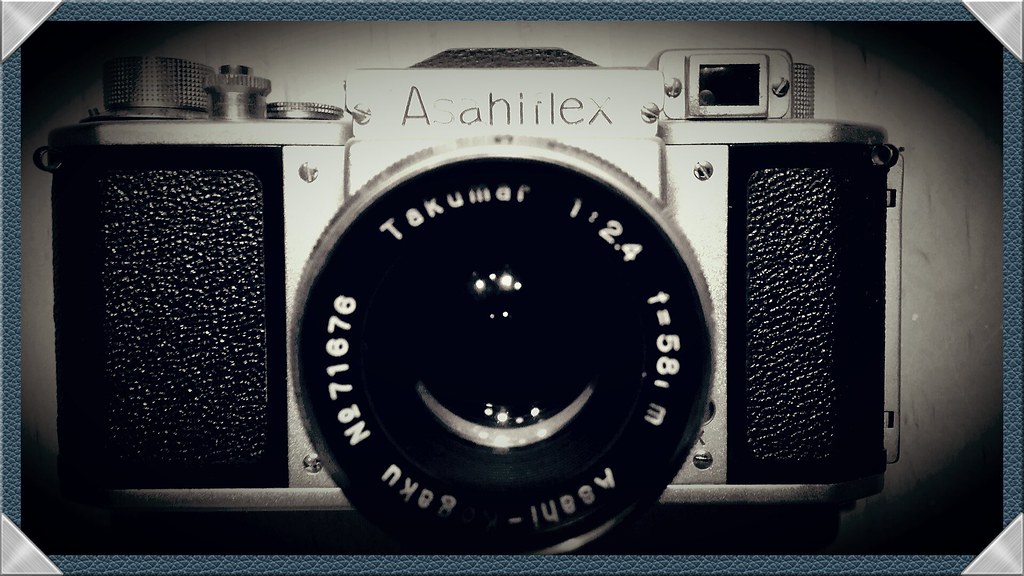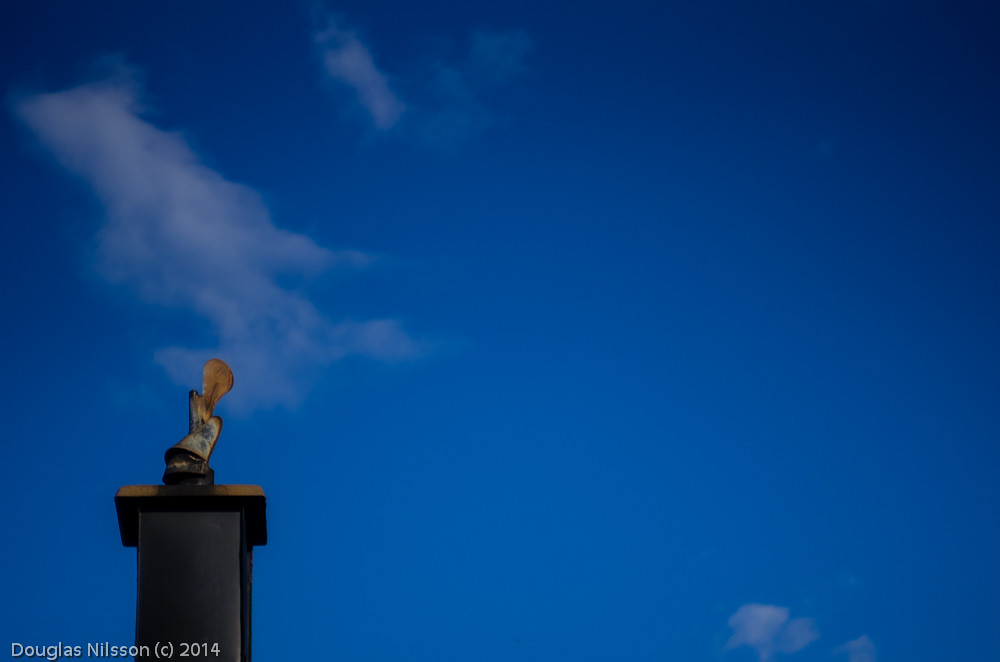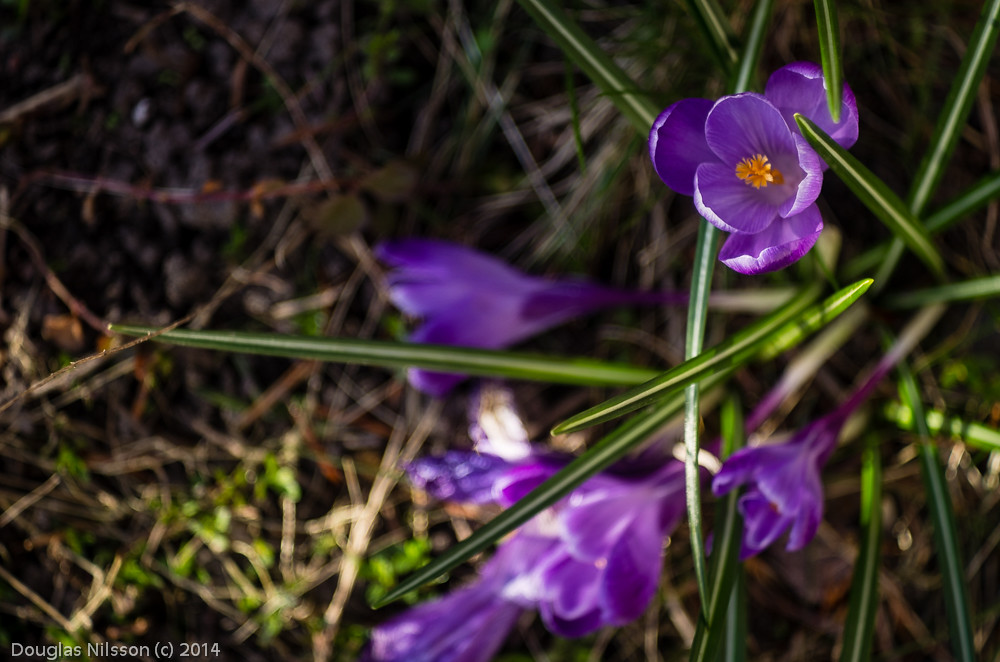 | |||||
| Asahiflex IIb with the Takumar f2.4 58mm lens. |
I recently got hold of an Asahiflex IIb. I've wanted an Asahiflex for many years...and historically this may be the most significant one. I wanted to get a first hand impression of how it was to shoot with the ancestry cameras of the later Pentax SLRs. Always when I buy old cameras, it is not as much to collect them, as to get a first hand impression on how it was to use them, what the conditions was for past photographers. The first Asahiflex I from 1952 was the first single lens reflex (SLR) camera made in Japan. The owner of Asahi Optical Company (AOCo, later known as Pentax), Saburo Matsumoto, the niece of the AOCo founder Matsumoto Kajiwara, was stubornly aiming at producing a SLR camera rather than straight on copying pre-war German rangefinders like the Japanese camera giants back then (for example Konica, Canon, Nikon and Minolta). So far SLRs had several draw backs compared to rangefinders: focusing screens were not as bright, the mechanism was more complicated, and the mirror prevented wide-angle lenses from protruding into the camera body. It had however a great advantage compared to all other camera designs of the time: you saw the actual image that you were about to photograph, through the same lens as the picture would be taken,and you could focus, frame, and close down the lens based on that view. This is easy to forget in this age of digital cameras lacking optical viewfinders, just showing you the same image as the sensor captures live.
But up to 1955 the SLR had an aditional problem. When you shot, the viewfinder went black and stayed black because the mirror blocked the view. It stayed black until you forwarded the next frame, as the film crank action moved the mirror back to its original position. There were an early German Praktica camera where the mirror returned by itself, but not until you removed the finger from the shutter.
The man who deseigned the first Asahiflex was Nobuyuki Yoshida, whom then continued to work on solving the black-out of the SLRs. In 1954 came the Asahiflex IIb, with the first instant-return-mirror, the solution to the black-out-problem. A few years later came the Asahi Pentax (where "Pentax" was the name of that particular camera, not of the company or the brand), basically a Asahiflex IIb with a pentaprism and the m37 mount of the Asahiflexes replaced with an m42 mount. History was made, and within a few years the whole camera industry followed. Late-commers like Canon almost went broke for staying too long with rangefinders, and we entered the age when AOCo/Pentax sold more cameras than Canon and Nikon combined. In 1960 the Japanese Science and Technology Agency Directors Award was given to Mr. Yoshida and Mr. Matsumoto for the instant return mirror design.
 |
| Full page advertisement in Popular Photography in 1955 for the Asahiflex IIa, which shared the instant return mirror with the IIb, but was released a year later. |
I've got a roll of Ilford XP2 in the Asahiflex now to test it out, but mechanically everything seams to work as it is meant to. But I have not been able to resist putting the lens on my Pentax K-5 (using a m37-m42 adapter in combination with a m42-K mount adapter), all wide open, see below.
Finally, in case some reader have got an idea how to explain this: When AOCo went with a 37mm screw mount they took a very individualistic choice. No one else made cameras with that mount, and there were ever very few 3rd party manufacturers of m37 lenses. With the Asahi Pentax they changed to the 42 mm screw mount of Contax/Praktica, which was a sort of main stream choice (with the m42 mount and the exakta mounts being the only larger established SLR mounts). OK, that makes sence...they realised that there was good arguments for joining an excisting standard. But why is it that they use the same registration distance for the Asahiflex and the m37 lenses as did Zeiss/Contax/Praktica for the m42 mount (45.46mm)? They could have ended up with any registration distance between 40 and 50mm if they had been as independent in their choice as they were with the mount itself. This is somewhat of a mystery to me.
Test shots with the Takumar f2.4 58mm m37 on the Pentax K-5, all at f2.4:
|
|


















